Attention! Pads are changed only as a set for one axle. When cleaning the pads, remove dust and dirt by wiping with a rag soaked in alcohol or a special liquid; blowing is prohibited. This procedure applies to the rear and front brake pads.
1. Unscrew the stopper of the brake supply reservoir.
2. Loosen the wheel nuts, raise the car (front or back) and place on stands.
3. Remove wheels.
4. Carefully check the condition of the disk (see subsection 10.6.). If grinding or replacement is necessary, remove the disc and pads.
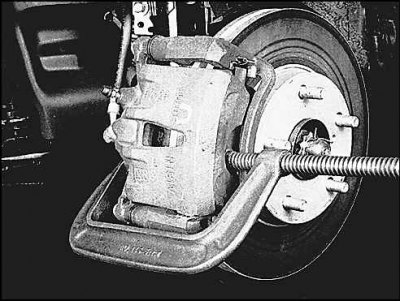
5. Push pistons into cylinders to install new pads. Use a clamp if necessary. As the piston sinks, the liquid level in the reservoir will rise. Remove excess fluid by aspirating with a syringe.
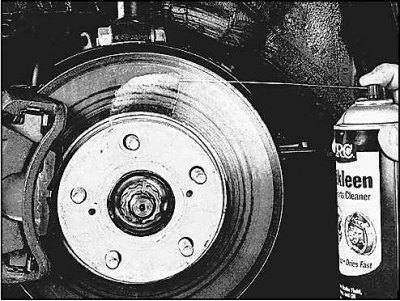
6. Before work, clean the brake parts with a special compound.
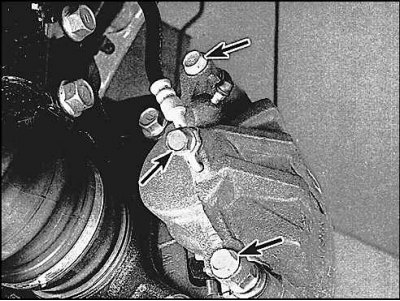
7. Loosen the bolts indicated by the upper and lower arrows (only loosen the hose fitting bolt when the caliper is removed from the vehicle).
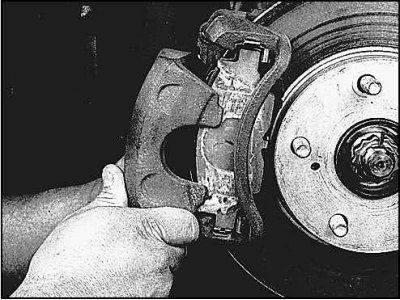
8. Remove the support.
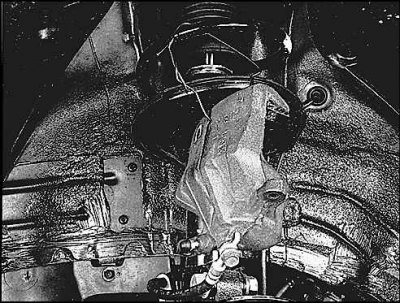
9. Secure the caliper with wire, avoiding sagging on the hose.
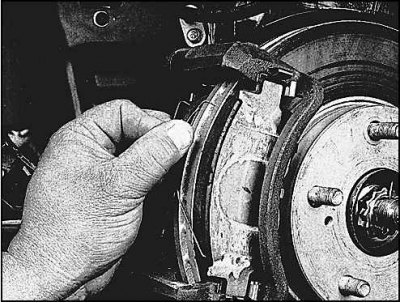
10. Remove the upper anti-noise spring of the pads (on 4-cylinder models).
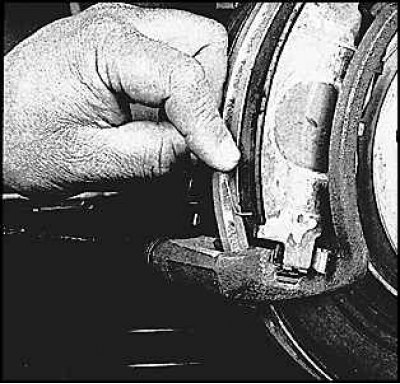
11. Remove the bottom anti-noise spring of the pads (on 4-cylinder models).
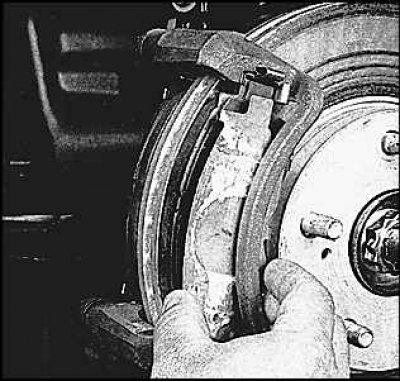 | 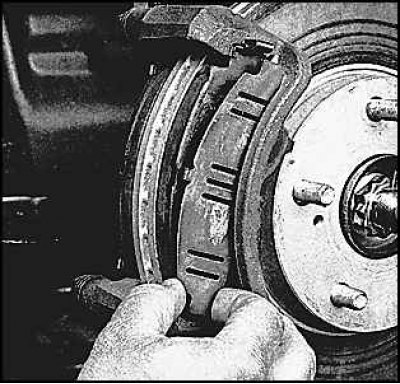 |
12. Remove the outer and inner noise plates from the outer shoe.
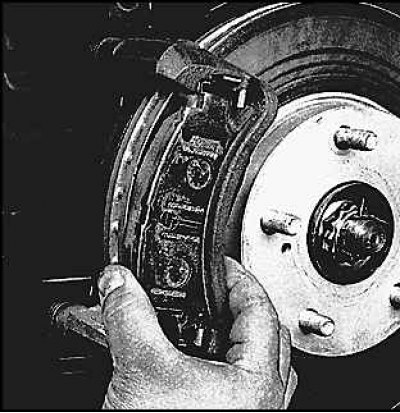
13. Remove the outer block.
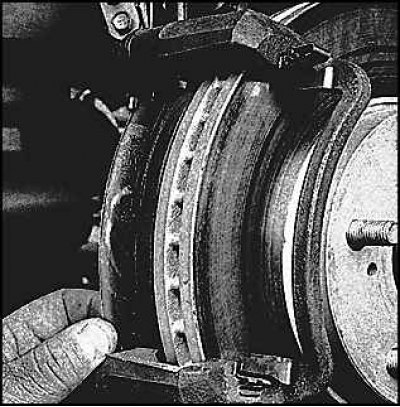 | 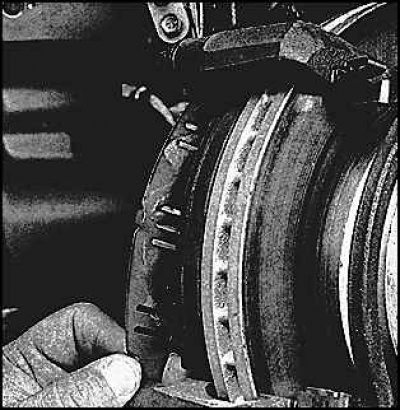 |
14. Remove the outer and inner noise plates from the inner shoe.
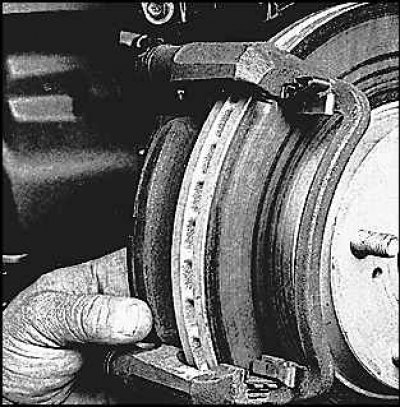
15. Remove the inner pad.
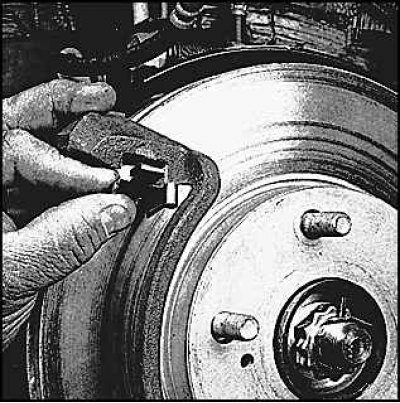
16. Remove the brake pads, check their condition and replace if necessary (the latches must snap into place in the sockets of the caliper brackets; if deformations or loosening of the fit are detected, replace the latches).
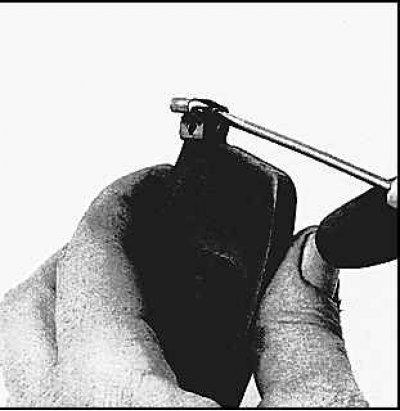
17. Pry and remove the wear indicator from the inner pad and reposition the indicator on the new pad. If damage is found, replace the indicator.
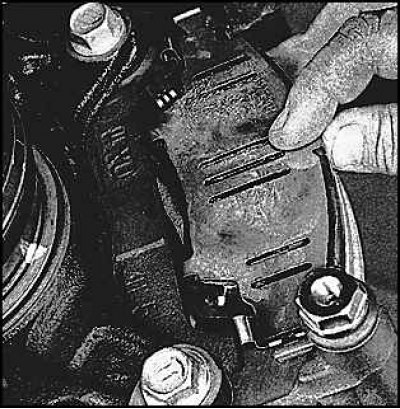
18. Install the pad retainer, new inner pad and noise plates. Make sure that the ears of the anti-noise plates go into the grooves on the clamps of the pads.
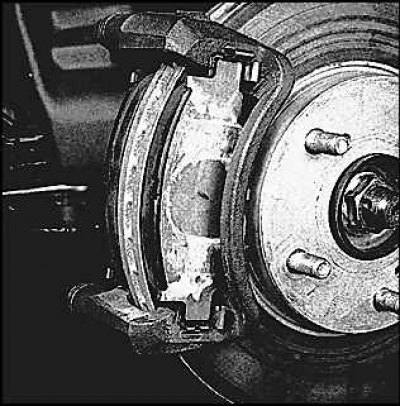
19. Install the pad retainer, new outer pad and noise plates.
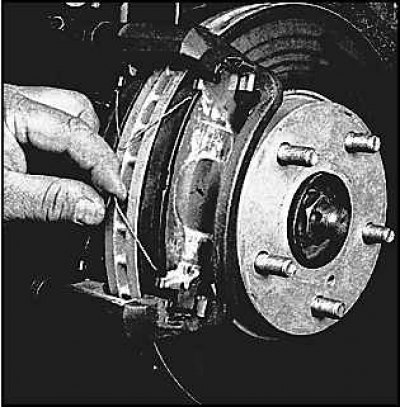
20. Install the upper and lower noise damper springs (on 4-cylinder models), make sure that the springs are engaged with the shoes.
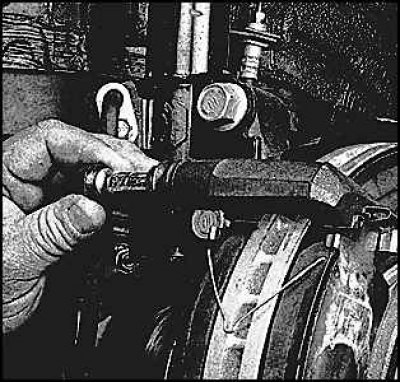
21. Remove the upper and lower pad pins and clean them (replace the damaged rubber boot by prying off the collar on the metal sleeve).
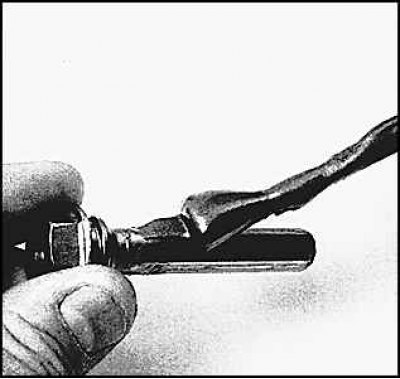
22. Then lubricate the pin with refractory grease and reinstall.
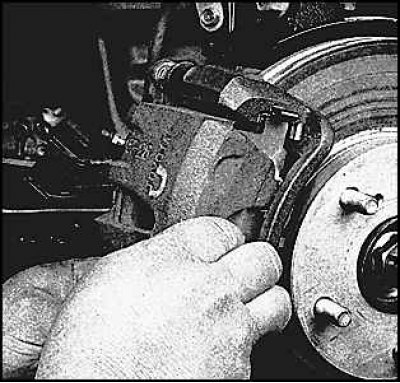
23. Establish a support and tighten bolts with the set moment.
24. Before replacing rear disc brakes, clean the brake parts.
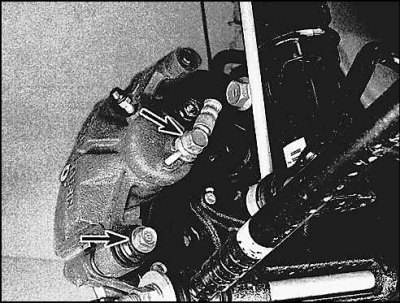
25. Loosen the caliper bolt (indicated by the bottom arrow), hose fitting bolt (top arrow) unscrew only if the caliper is removed from the vehicle.
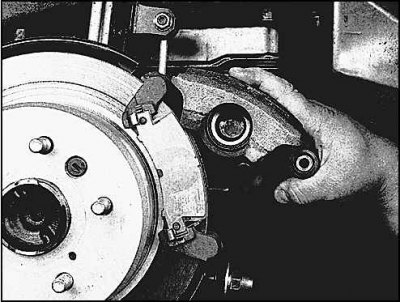
26. Pull out the caliper and secure.
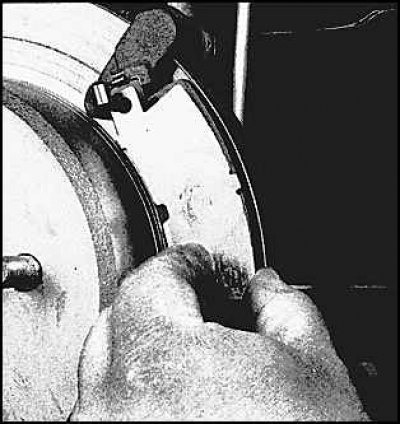 | 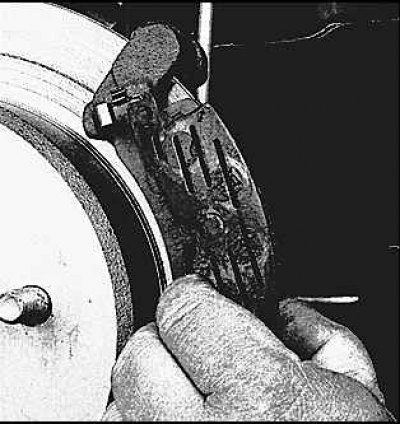 |
27. Remove the outer and inner anti-noise plate from the outer shoe.
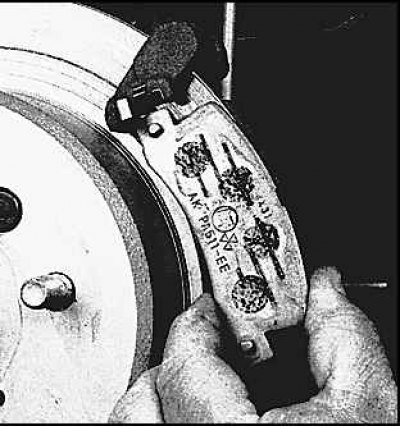
28. Remove the outer block.
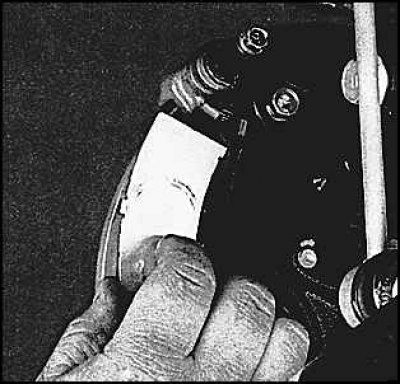 | 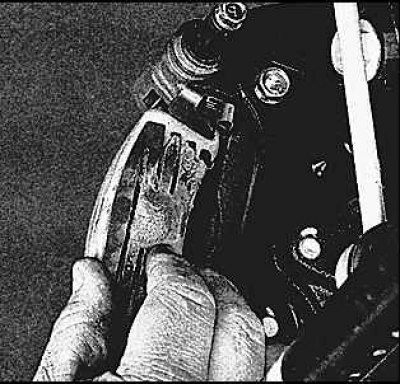 |
29. Remove the outer and inner anti-noise plate from the inner shoe.
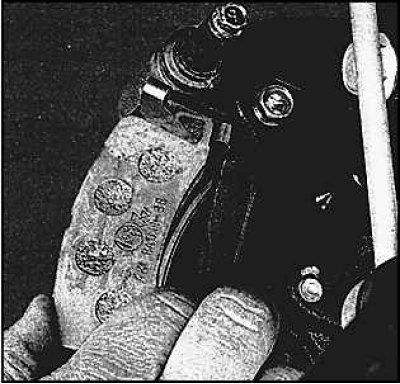
30. Remove the inner pad.
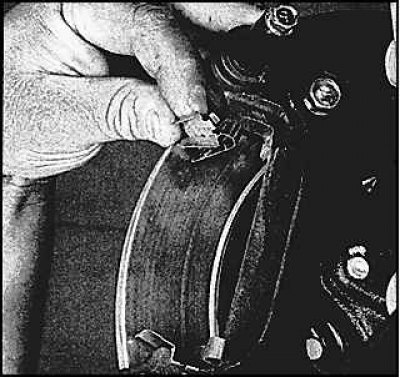
31. Remove the brake pads, check their condition and replace if necessary (the latches must snap into place in the sockets of the caliper bracket; if deformations or loosening of the fit are found, replace the latches).
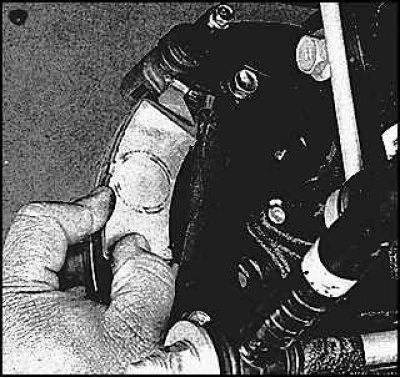
32. Install the pad retainer, new inner pad and noise plates. Make sure that the anti-noise plates engage with the pads and with each other.
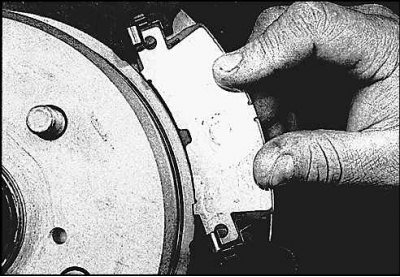
33. Install the pad retainers, new outer pad and noise plates. Make sure that the anti-noise plates are engaged with the outer block with each other.
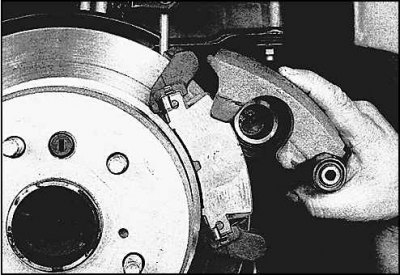
34. Lower the caliper by putting it on the new pads. Tighten the bolt to the specified torque.
35. At the end of the assembly, press the brake pedal several times to bring the pads together with the disc. Check fluid level, top up if necessary. Check the operation of the brakes.
